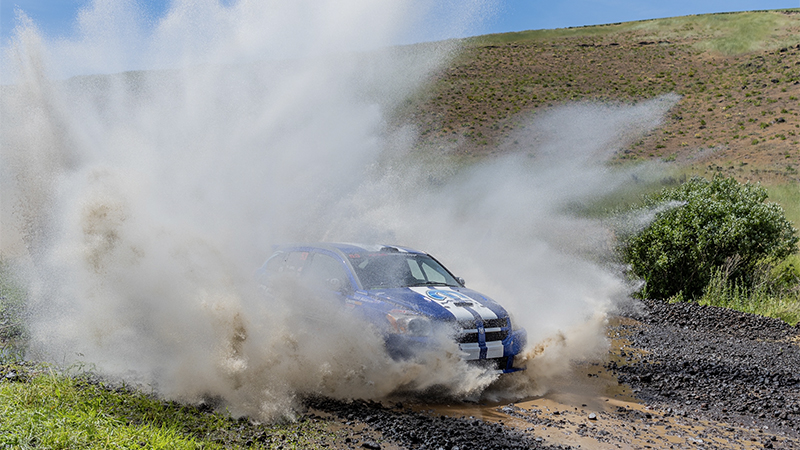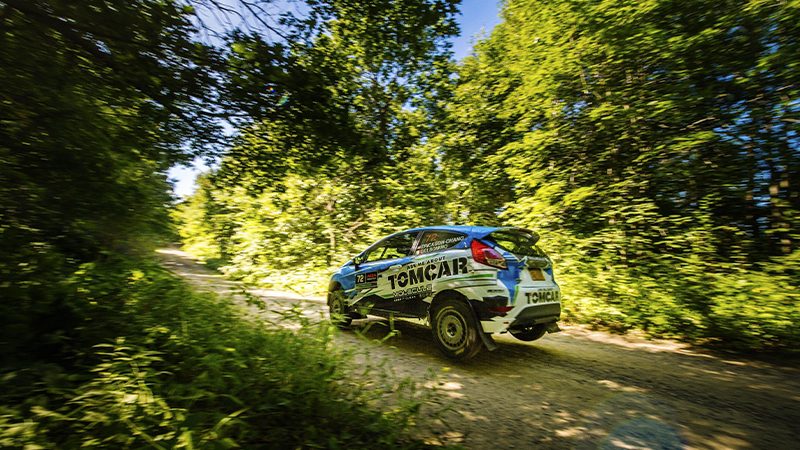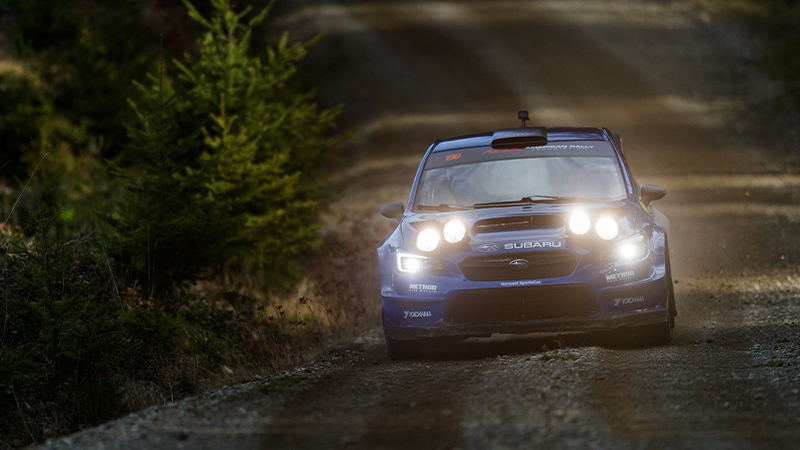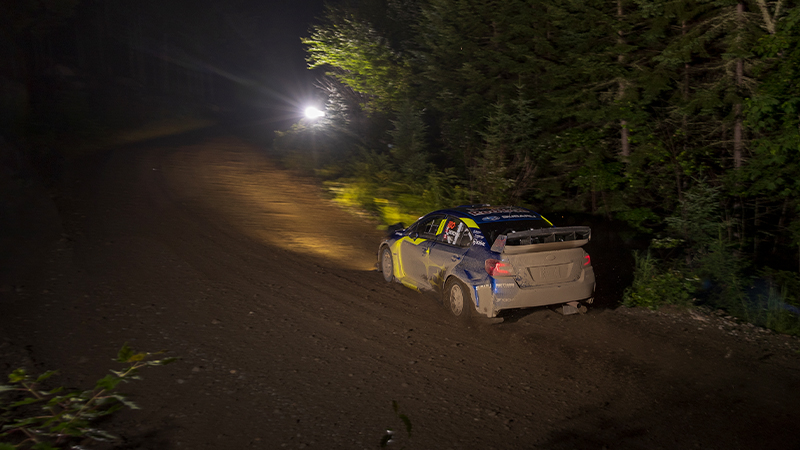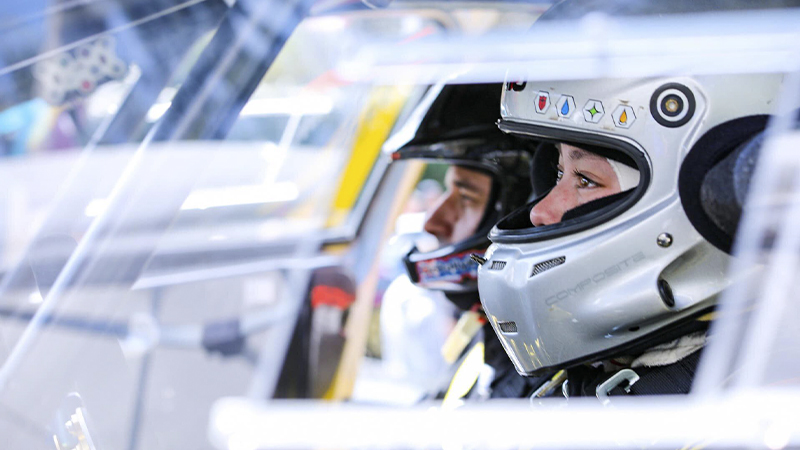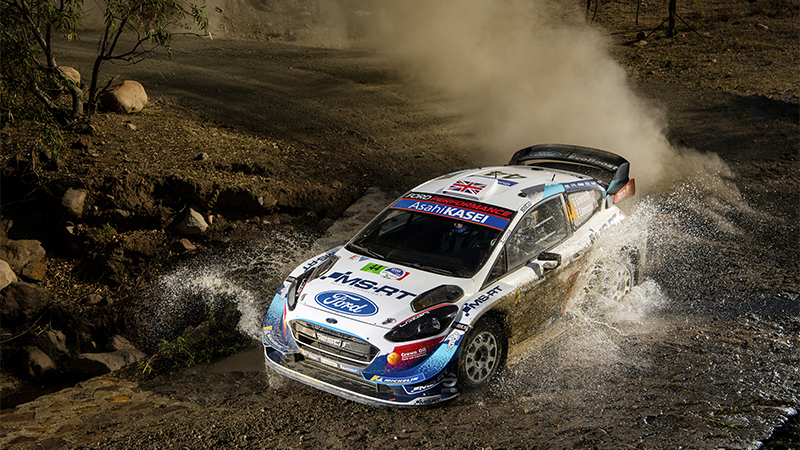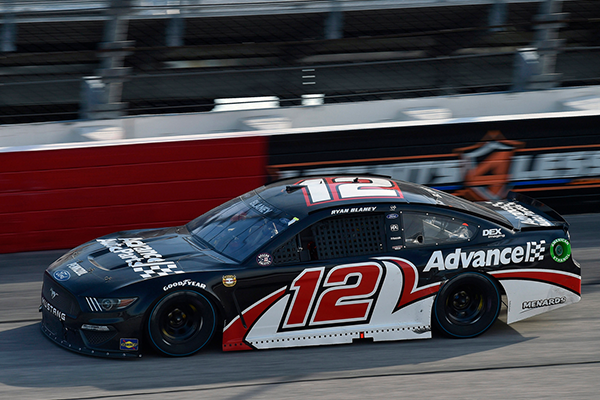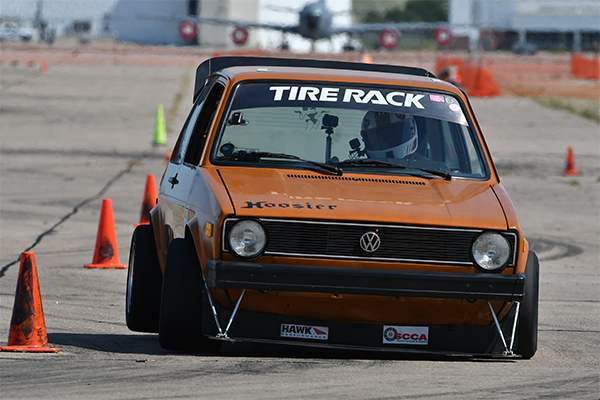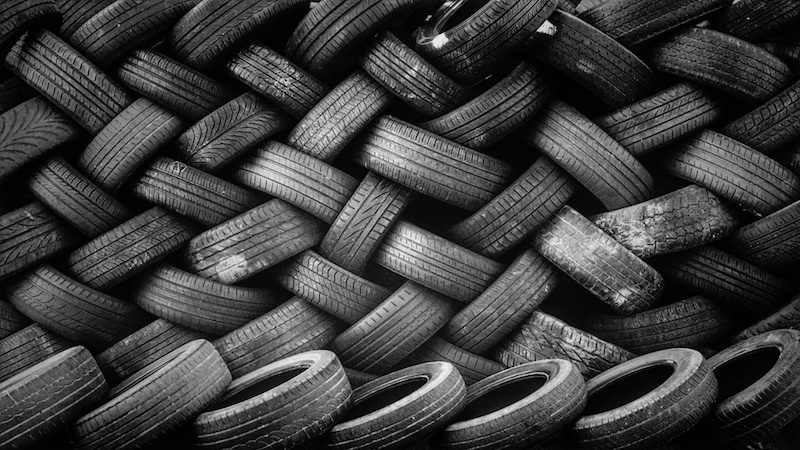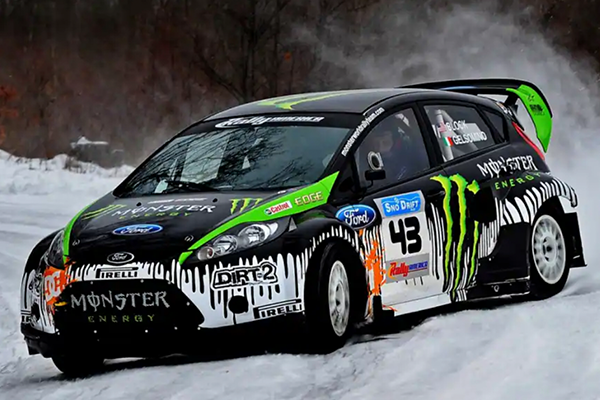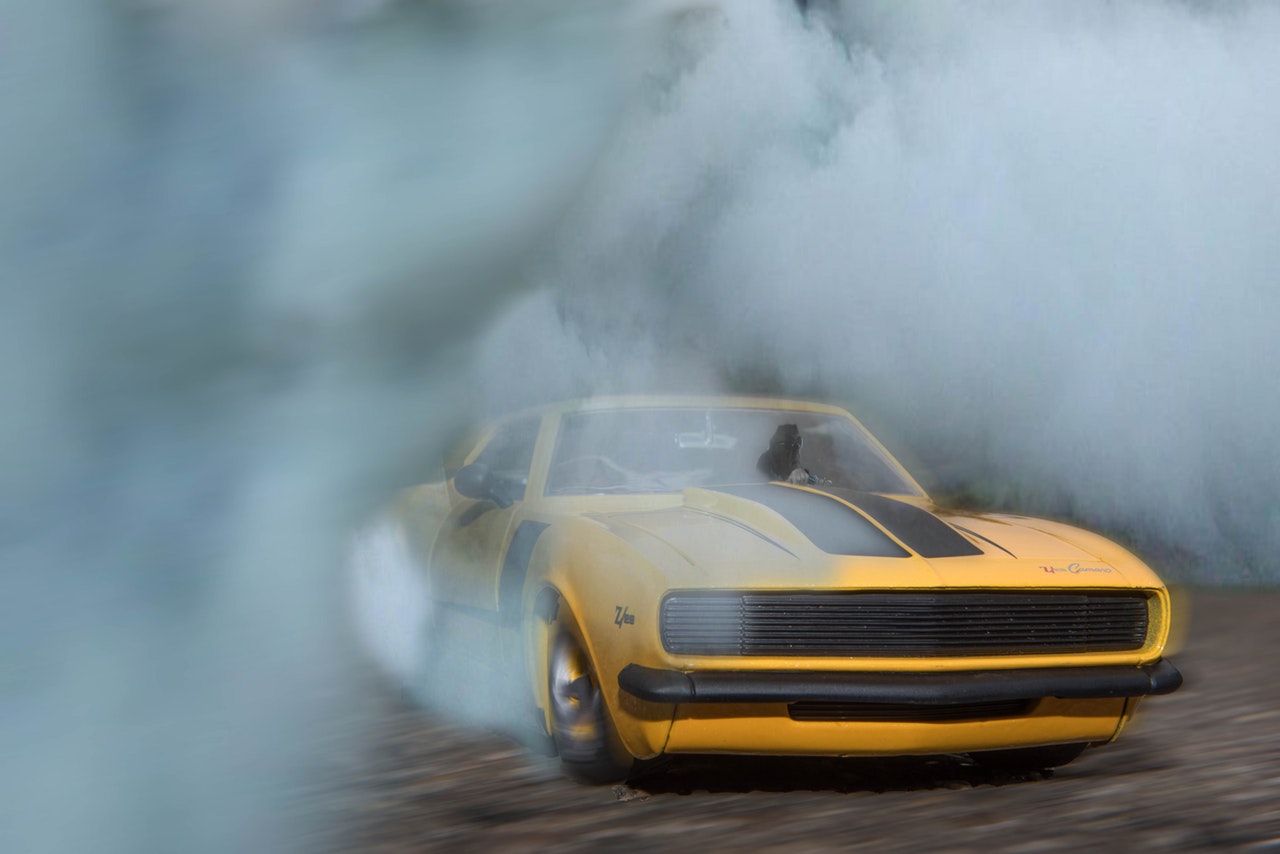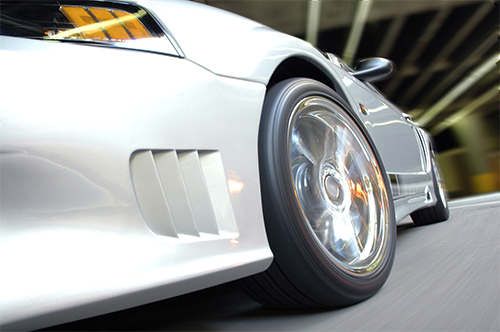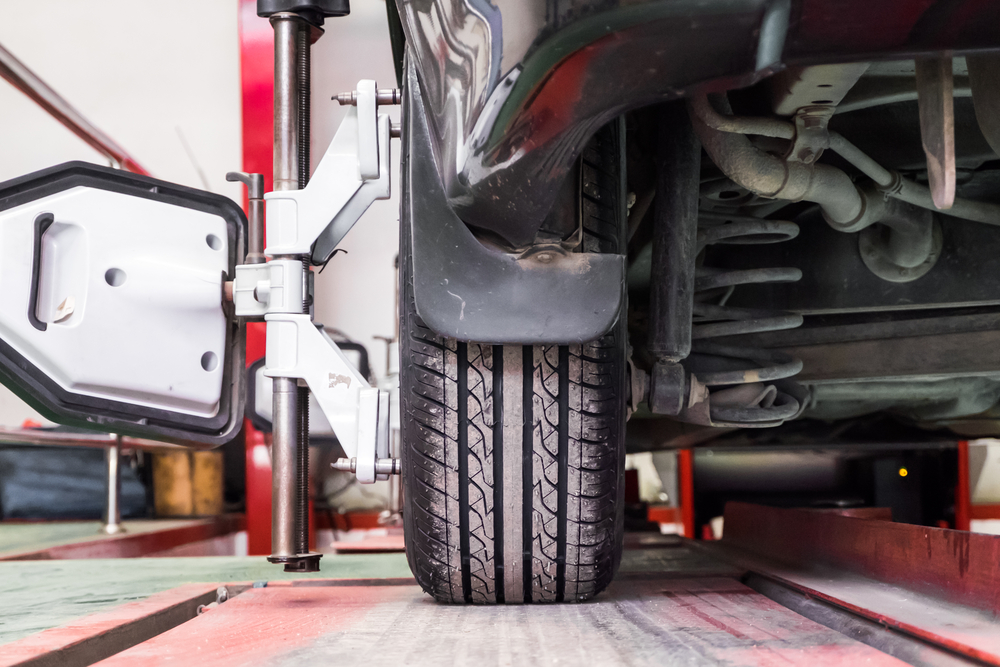Charging through the forest, sliding through mud and taking blind jumps all on the trust of your co-driver. Welcome to stage rallying.
Whether you've watched various forms of rallying over the years or have recently got hooked on Dirt Rally, you might be wondering how you can try it out for yourself. First up, there are a lot of different types of rallying out there. Most people will immediately think of stage rallying — timed events on closed roads or tracks. This is what you'll find in the FIA's World Rally Championship and is very much based on speed and driving skill.
There are also road rallies, which take place on public roads where drivers and navigators have to follow the normal rules of the road, including sticking to speed limits. These are most popular in the UK but you can also find them in the U.S.
Rally raid is another type of off-road event that takes place cross-country. These events vary hugely depending on the organizer — sometimes they're on a set course, sometimes not.
Finally, there's rallycross, which is an exhilarating cross between stage rally and circuit racing. This is a discipline in its own right and many rally drivers try their hand at rallycross, too. It's also a great place to start if you're on a budget but that's an article for another time.
If you want to hit the rally stage, read on. We'll be covering how to get started, build a car, and progress through the ranks.
First steps
There are a number of routes into rallying but, as with any motorsport, you need to get along to an event to see how it all works. This is a great way to get to know the format and meet the people involved. You could even volunteer at a local event to get a behind-the-scenes look at how it's run.
Karen Jankowski is a rally co-driver who started her career working with a team to learn the ropes. She says: “Volunteering at an event will help you to learn how it all works but you also get a chance to meet and network with teams. You can also volunteer to crew on a rally team since they are always looking for help."
Another option is to look at rallycross. This is an affordable way to get started and while it's different to stage rallying, it'll give you some of the foundations of car control on different surfaces.
In fact, there are lots of routes into rallying. Keanna Erickson-Chang, an American rally driver who has competed in both national and international events, explains her journey: “Before starting out with rallying, I was doing ice racing and endurance racing. I was planning to make the move into a sportscar series the following season but I got my first real taste of stage rally. It reminded me of why I fell in love with performance driving."
How to learn
It's possible to learn as you go but if you want to start strong, look to a rally school. “I went to a rally school back in 2006 and the following week was the Oregon Trail rally," Jankowski says. “I didn't have a car but a team needed a co-driver so I said yes. I kept on getting asked to co-drive by meeting as many people as I could and getting my name out there. I've been fortunate to be able to team up with some really great drivers in my career and worked hard to make the most of those opportunities. Now I own a two-car team that competes in rally and road racing, which has been an absolute dream come true."
Erikson-Chang echoes this. She says: “Attending a rally school like Dirtfish or Team O'Neil is a smart option. You'll learn more about how rallies work in addition to perfecting your technique."
Find your first event
Your local car club is probably the best place to start to find a rally event. The SCCA runs rallycross and roadrally events but if it's pure stage rallying you're after, NASA runs the Rally Sport championships. Also, take a look at the American Rally Association (ARA) for both regional and national events.
Building a rally car
You can, of course, just buy a rally car and hit the stage… but where's the fun in that? If you're mechanically minded and want to build or modify a car for rallying, here's what you need to know.
As with many forms of motorsport, the key is to start simple. It's very easy to build a fast, capable car that outpaces your skill, which can be frustrating. It's better to start with something slower so you can really hone your driving ability. Jankowski has this advice: “The best car for rallying is the one you already have or one that you are passionate about. Another thing that is important is to find a car with lots of cheap parts available. My car is pretty rare so parts are becoming quite hard to find and, in rally, hitting something is a when not if."
This makes both Subaru and Ford great options for your first rally car but you've got plenty of options, as Erickson-Chang explains: “Older BMWs and Volkswagens also have a place in the hearts of many regional rally competitors. It's quite possible to modify a car for rallying, too. In fact, the American rulebooks make it quite easy to compete in any production car you desire."
If you have a car you'd love to rally, take a look at the rules of the event or championship you want to compete in. A good place to start is with the technical rules of the ARA. This defines what's eligible and goes into great detail on everything from chassis to vehicle weight to mud flaps.
While going with one of the popular cars is a great idea when you're starting out, there's no reason you can't go with something a little rarer. Jankowski says: “ The cool part about stage rally is you can race almost any type of car. There are lots of Subarus and Fords but there also unique cars like the Nissan Juke, Toyota Starlet, RX7, and many others."
What about co-driving?
While driving a rally car is a lot of fun, great co-drivers are in high demand. The co-driver's job is to navigate the rally stage and read from pre-prepared pace notes to communicate what's ahead. This helps the driver understand what obstacles might be coming up (jumps, bridges, narrow sections) and what turns to expect (which direction, the severity, and so on).
There are a number of skills needed to become a co-driver. Jankowski says: “Anyone can become a co-driver; that's one of the cool parts of rally. Not getting motion sickness, being organized, good attention to detail, being flexible as things change all the time, and being a good communicator are some of the skills that definitely help."
Co-drivers are also often responsible for other organizational tasks in the run-up to an event. Because they are such a valuable part of the puzzle, these skills are highly sought after. If you want to compete in as many events as possible, it might be worth considering becoming a co-driver. There's no reason you can't drive in some events and co-drive in others.
The professional rallying ladder
You've got so many options for grassroots rallying, but the ladder to the professional level isn't perhaps quite as clear as something like drifting. Erickson-Chang says: “Unfortunately, America doesn't have a great ladder when it comes to progression in the sport. In fact, many newcomers in the past 10 years rally for three or four seasons before moving on. However, there are more and more younger people getting into the sport, and the JWRC or ERC Junior is a great place to aim for these drivers."
Professional rallying hits its pinnacle with the World Rally Championship (WRC), but there are also support series to aim for. These are divided into two categories, one for manufacturer-supported entries (WRC2) and one for independent drivers (WRC3). On top of this, there's the Junior WRC, which provides an entry-level championship to younger drivers.
If you're looking to get into rallying, start by going along to a regional event. Here you'll be able to meet people, look into volunteering, and perhaps even find a mentor to show you the ropes.
Have you thought about becoming a rally driver? Let us know in the comments.
